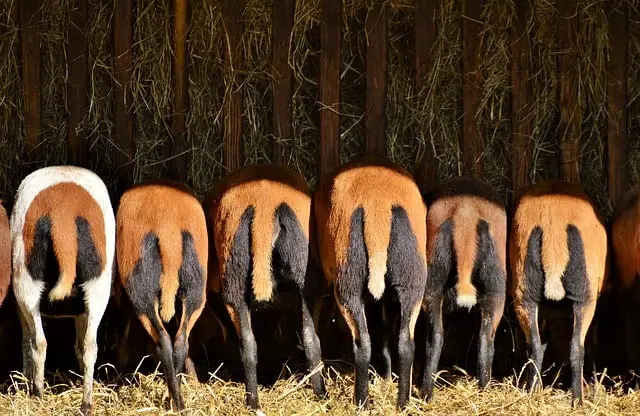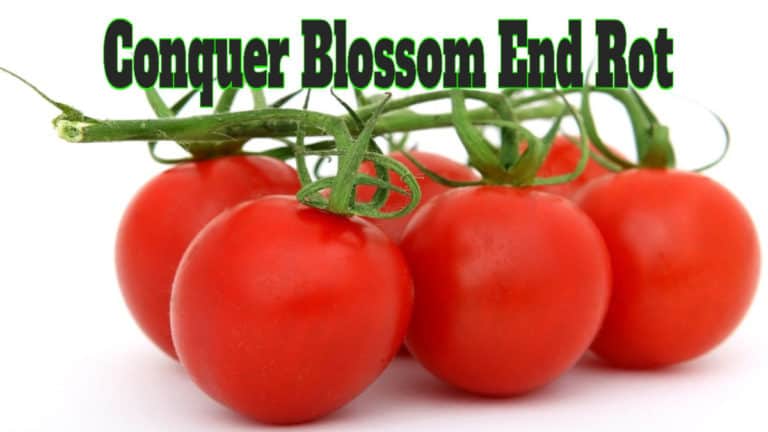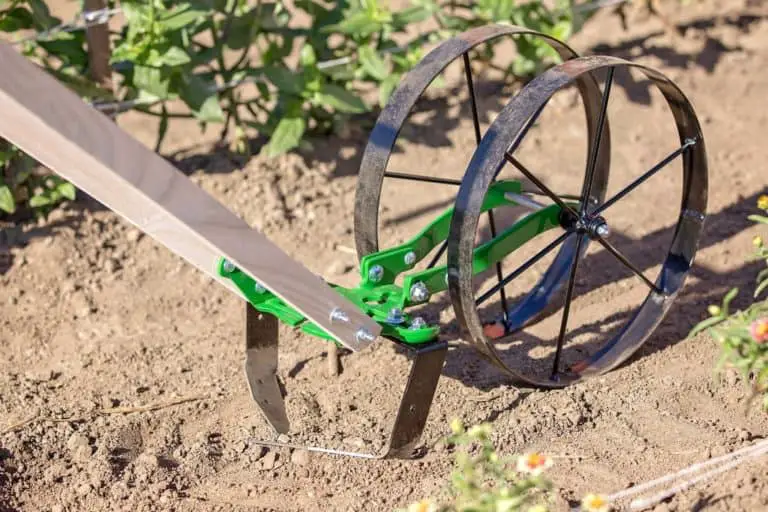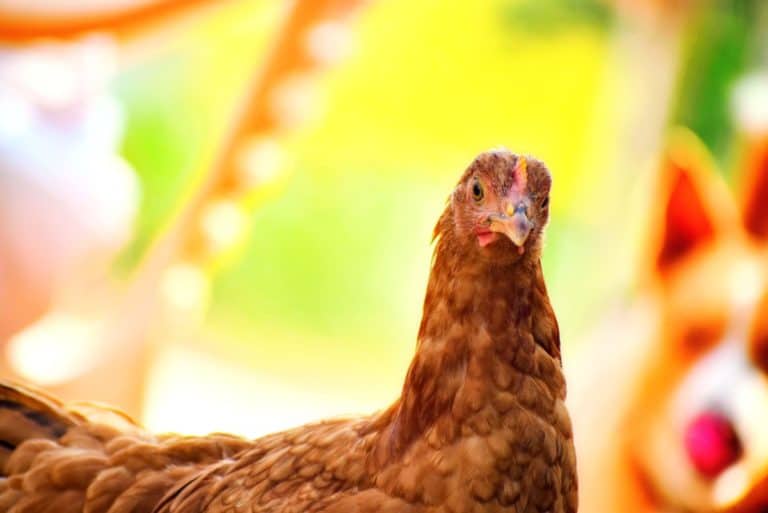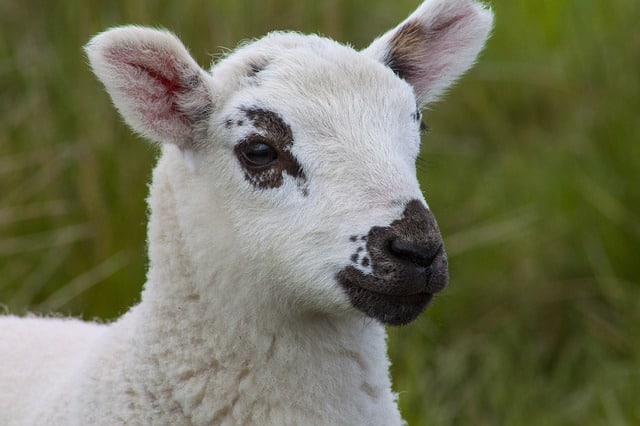

Raising sheep is becoming a popular pastime for American Homesteaders and Ranchers. One of the reasons for this is the rise of Hair Sheep breeds. Many are abandoning the traditional woolly breeds in favor of hair sheep. Here are some reasons why you might want to consider Hair Sheep.
Hair sheep do not grow wool, which eliminates the need for shearing. They also have fewer parasite problems. As a general rule, they don’t require “tail docking” (cutting off the tail) and have much less birthing problems than wool sheep.
Some Favorite Hair Sheep Breeds:
| Breed | Traits |
| Katahdin | Docile. Good breeders. Prolific |
| Barbados Blackbelly | Beautiful coloration Resemble an antelope or small deer Can be flighty |
| California Red | Has a fine hair that can be “spun”. Popular with craft hand spinners |
| Dorper | Do well in hot dry climates. Fast-growing. Highly muscled. Top performer |
| Romanov | Considered a hair sheep but Produce a heavy fleece Usually, have to be sheared |
| St Croix | Solid white Very resistant to parasites Highly prolific |
It’s All About The Hair
As I said, Hair Sheep don’t grow a wooly coat. They grow a thick coat of hair in the winter to protect them from the cold, but it never has to be sheared. They shed their winter hair in the late spring and summer just like many other animals do. That makes them very attractive for those that would like to raise sheep, but do not want to have to go to the trouble, expense and labor-intensive process of shearing them.
Shearing sheep is a dying art, and it is becoming harder and harder to find “sheep shearers” in the U.S. One of the reasons for the loss of interest in shearing is the price of wool. It is less attractive to the landowner to raise an animal for a commodity that is falling out of favor with the consumer. To be sure, some types of wool, (like Merino wool) is actually gaining in popularity. Merino wool does not have the “itchy” characteristics of most wool and is much more valuable. But regular “run of the mill” wool has been replaced in many instances with synthetic fabrics.
Also, shearing is a time-consuming project that most homesteaders don’t have the expertise or time for, considering the small amount of compensation. However, some homesteaders have started cottage businesses spinning their own specialized wool blends for sale. But, having handles sheep myself, I don’t envy them when shearing time rolls around. Wrestling with a 100-pound ewe or a 180-pound ram is not fun. Trust me.
Hair Sheep begin to lose their hair as the temperature begins to warm. It usually takes several weeks for it to completely fall off. During that time, the sheep’s hair can actually have the appearance of dreadlocks. It really changes the look of your sheep, but it’s kind of a neat sight to watch, and it’s temporary.
If they have a tree or some other type of scratching post to rub on, they will rub against it in an effort to remove the winter coat. It’s just what they do to get that winter coat off of them so they can enjoy the summer without the burden of a thick layer of winter hair.
Tail Docking
Wool sheep almost universally have to have their tails “docked”. That means they have it cut off. Kind of like some dog breeds will have their tails bobbed. The reason they do this to wool sheep is that flies and maggots congregate in the wool at their posterior, which can cause disease and irritation.
When there is a long tail and a thick coat of wool covering the backside of the sheep, the flies, and other pests have a heyday and begin to lay their eggs. Docking the tail removes that “cover” so the animal can be sprayed and doctored to prevent the maggot infestation, or to treat it once it occurs.
Since Hair Sheep do not have wool, there is no need to ever dock the tail. There is no “wool” to invite pests to congregate. Some people do dock the tails of Hair Sheep, but I think it’s more out of tradition and not a necessity. They think that’s the way sheep are supposed to look, so they dock their tails.
Tails are docked on wool sheep because when the sheep “eliminates” the wool catches the excrement and urine and can hold it, which again brings flies, which lay eggs, which hatch into maggots. Looking at the manure-caked backside of a sheep is not an appealing sight… or smell.
I will mention here that I raised Katahdin sheep, one of the many breeds of Hair Sheep. And if I ever get any more sheep, they will probably be Katahdins. I never docked the tails of any of my sheep and never had a problem.
Along with docking is a practice called “Crutching”. That is when wool around the vulva and udder is removed. Not doing so with a wool ewe could mean that the lamb finds a piece of wool and not the ewe’s teat to suckle on.
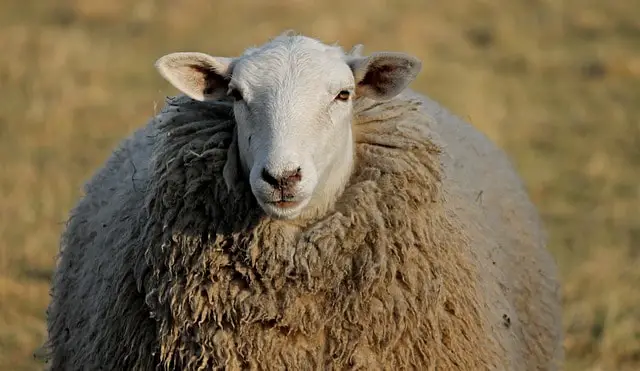
That could be catastrophic if the lamb doesn’t get the milk it needs. It’s rarely necessary to “crutch” the udder, or vulva of a Hair Sheep.
External Parasite Control
Most of the wool breeds have to be “dipped” to eliminate or reduce the presence of external parasites. Those parasites include ticks, mites, lice, fleas, and flies. These parasites can easily transmit diseases from sick animals to healthy animals and must be controlled.
They have a pit that the sheep are forced to plunge into, ensuring that they all get completely immersed in the chemicals.
The chemicals used are pretty harsh I would imagine and having Hair Sheep virtually eliminates having to use them. I never had to “dip” my sheep, and I don’t know any Hair Sheep producers that practice dipping. Maybe some do, but I don’t know of any.
Now, I’ve got a few cows and a few times a year, I usually spray them for flies. It helps keep the flies down so they can get on with their business of eating and producing babies. But it’s not a full “dip” it’s just a spray down their back.
So, yet another reason to raise Hair Sheep is the absence of having to “dip” them for external parasite control.
Internal Parasite Control
Hair sheep do get worms. The most common internal parasites in sheep are lungworms, stomach worms (commonly called barber pole worm), liver flukes, and intestinal parasites.
Just because they don’t have very many external parasites doesn’t mean they don’t have internal parasites. But, the instances of internal parasites in Hair Sheep are a lot less prevalent than wool-type sheep.
I found I only had to treat my Hair Sheep with a wormer only twice a year. Many wool sheep need treatment 3 or 4 times per year. There were times that they just didn’t seem to need it and I only treated once in that year (there are signs to look for when determining if treatment is necessary).
Hair Sheep just are just not as susceptible to internal parasites as wool sheep. Another mark in their favor. A big mark.
Hair Sheep Are More Prolific
It’s true. Hair sheep, compared to most conventional wool sheep breeds, have a better reproductive capacity. They come into puberty early and thus breed earlier. Their fertility rate is generally higher than that of wooled sheep.
The rams are very active breeders and have the ability to “cover” many ewes in a flock. The ewes are good mothers and are as good or better “milkers” than wooled sheep, so the lamb(s) have plenty of nutrition. The lambs are usually strong and vigorous, and hit the ground running!
Lambing Issues Are Reduced Or Eliminated
If you go to Any site about raising sheep they will instruct you to build a lambing pen so the adult you can go in and have her babies. This is a place about 8 feet square to hold the prospective mother while she nears labor.
And they will hold an around the clock vigil watching those ewes for any lambing issues. Wool sheep are much more prone to having problems during labor and delivery than hair sheep are.
In fact, ranchers that raise Hair Sheep seldom use a lambing pen at all. Most of the lambs produced by hair sheep are lambed (birthed) in the pasture with no help from anyone but Mother Nature.
I never experienced any problems with lambing issues. I never had to “pull” a lamb, or help the ewe in any way. I was present for many lambings, but only to watch as the miracle of life happened. That never got old.
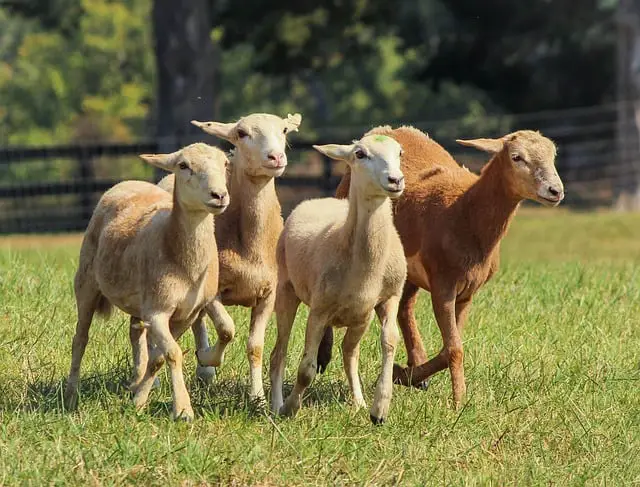
The only problem I had regarding a ewe and her lamb was a first-time mother that didn’t accept her lamb right away. In that case, I did construct a quick pen to put her and her baby in to allow them to get acquainted. It worked great and I never had a problem with her or any other sheep after that. Most Hair Sheep are great mothers, with a strong maternal instinct. That might be said for wool sheep too, but I’m really partial to Hair Sheep.
Also, expect multiple births from your Hair Sheep. Most sheep have more than one lamb with the average being 1.5. Meaning that out of 10 ewes 5 may have singles and 5 twins (or more). What makes this important is that with multiple births (which all sheep have a tendency to produce) come multiple problems, except in Hair Sheep.
I’m not saying you’ll never have to pull a lamb, or that you’ll never have any birthing issues. I’m saying that they are much fewer than you’ll have with wool sheep. That’s why wool sheep raisers have the lambing pen… birth problems.
Having Hair Sheep doesn’t necessarily eliminate the lambing problems, but it usually does reduce them to almost nothing, in my experience.
Nutritional Requirements
Hair Sheep just do better on pasture. They are often fattened on pasture where wool sheep are typically fattened, or finished in a feedlot.
The lambs do very well on pasture too. Now, I’m not saying that they won’t come running when they hear you shake a feed bucket at them, but as long as they have a good stand of grass, Hair Sheep will do just fine and will be profitable for you.
Meat Flavor
Most will say there is definitely a difference in the flavor of meat between a Hair Sheep and wool sheep. There is a noticeable absence of the “mutton” taste that turns off many people.
I’ve butchered several of my lambs and find the meat to be excellent. In fact, I really can’t tell the difference between the meat of one of my Hair Sheep and beef. We’ve eaten roasts, steaks and lots of ground lamb, and if I didn’t know what I was eating, I would think it was beef.
Because Hair Sheep do so well on pasture, they are a great animal to raise for “grass-fed” meat. During the winter when their nutritional requirements are greater, I would feed them some each day, but during the spring and summer, they ate grass. Almost exclusively.
Homesteaders that are looking for a side business should consider Hair Sheep because it will give you a “grass-fed” product to market. Grass-fed meat is very popular now, and a smart entrepreneuring homesteader could capitalize on that.
Cross Breeding
As in other areas of nature, hybridization can improve the quality of sheep. There are advantages to a cross-breeding program with wool sheep. Many meat-type wool breeds are more muscular, have a better growth rate, and produce a better carcass quality than Hair Sheep.
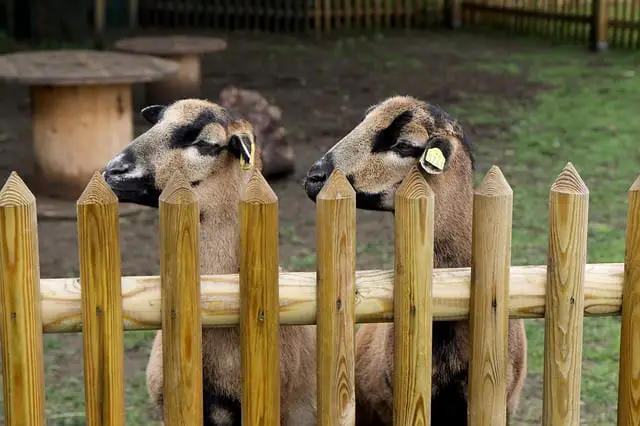
Some of the wool sheep, for instance, a Suffolk ram, could be used to breed a flock of Hair Sheep. This would give a lamb that had the parasite tolerances of a Hair Sheep but the growth properties of a meat-type wool sheep.
The Dorper hair sheep is an exception. They are well known as a breed of hair sheep with vigorous growth, exceptional carcass quality, and are the fastest-growing breed in the U.S.
If I were going to cross-breed, I would do it within the Hair Sheep family. The Dorper is a breed of Hair Sheep but has the growth potential and carcass quality of a meat-type wool sheep. A Dorper ram paired with a Katahdin or St.Croix ewe would produce a fast-growing lamb that would probably need less care, such as parasite control.
In fact, crossbreeding programs between Dorper and St Croix hair breeds have produced two new breeds, the St. Augustine and the Royal White.
More Docile
I don’t know if you’ve ever seen any of the “Angry Ram” videos on YouTube, but that ram is so aggressive he will chase down and butt a motorcycle. There are many videos featuring him running people down and ramming them. Angry Ram is a wool sheep. I’m not saying all wool sheep are like Angry Ram, but…
The Katahdin sheep I raised were very docile. I never had to worry about a ram taking aim at me in the pasture. Much of that is how they are raised, but much of it is just because of the traits of Hair Sheep. They are very docile and gentle.
I might get crowded-up and swarmed by them if I had a loaf of day-old bread to give them, but most would take a hand-feeding from me, and all were very gentle, even the rams I kept.
All in all, my experiences with raising sheep are really good. As I age, the prospects of wrestling a 300-pound calf are much less desirable than snatching up a 40-pound lamb.
Raising sheep is an enjoyable pastime with few problems and fewer instances where they need intervention. Choosing a good breed of Hair Sheep will make sure the problems are minimal, will insure you are less hands-on and will make your life just generally more enjoyable.
It’s a pretty sight when you see your sheep out grazing on your land. And that experience is enhanced by knowing they are doing very well on their own, without your intervention. If they are Hair Sheep.
Be sure to watch my extended Playlist on my YouTube Channel, with hundreds of thousands of views, dealing with all aspects of raising Hair Sheep.
I also have around 800 videos on my YouTube Channel dealing with just about every aspect of Homesteading Life. You can find all my videos HERE.
